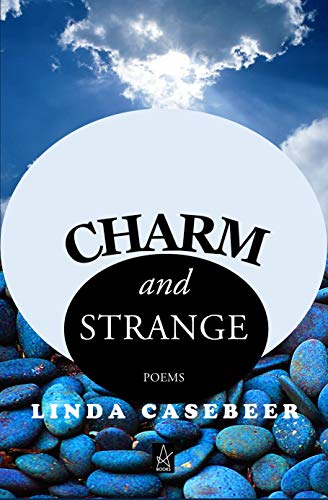A latecomer to poetry, Linda Casebeer now has two fine volumes to her name: 2008’s THE LAST ECLIPSED MOON and this year’s CHARM AND STRANGE, taken from a poem of the same name that refers to two types of quark, a subatomic particle. The poems are lyric, tightly composed, and with little formalism. Certain images turn up again and again–peonies, horses, the ocean–while others are unique. (I defy you to name one other American poem that uses the word “zooxanthellae.”)
One thing that jumps out at the reader is Casebeer’s complete absence of punctuation. On her website, she cites W.S. Merwin as an influence in this area. Merwin felt that periods and commas “stapled” the language to the page. He once wrote, “I think punctuation is prose. We don’t punctuate our speech, and we don’t punctuate when we sing. Poetry always has to have one foot in song and in speech.” Not using punctuation is a valid artistic choice, but when you eschew it in every poem, it feels more like a tic. (Even Merwin used it occasionally–e.g., “Ballad of John Cable and Three Gentlemen”; “Colloquy at Peniel”; “Half Roundel.”) Casebeer’s punctuation-free approach works in poems like “Imagine the Weight,” the first in the book, which puts the speaker in a dreamworld where they are rushing rushing rushing, a la Alice in her pursuit of the White Rabbit. But in a poem like “Dreamscape,” which has a languid, leisurely tone, it serves as a distraction. (This is really a preference, though. If tossing out the commas and semicolons is the key that unlocks Casebeer’s imagination, then she should do it. Period.)
There is something of the Imagist in Casebeer, as many of the poems have flower imagery and Asian allusions. She also invokes the New York School, particularly John Ashbery, with poems like “Arbitrage,” which name-drops Betty Grable, Jimmy Durante, Abbott and Costello, Lloyd’s of London, and Gabriel Garcia Marquez’s “The Incredible and Sad Tale of Innocent Eréndira and Her Heartless Grandmother.” There isn’t a wide variety in Casebeer’s tone–most of the poems are wide-eyed, tentative, searching–but you’ll get lost in the lushness of her lyrics.
Linda Casebeer’s CHARM AND STRANGE combines the purity of Imagism with the wittiness of the New York School into a unique collection of poems.
~Anthony Aycock for IndieReader

